Here's what different countries feed their troops, from kimchi to dried cappuccino to pizza with a three-year shelf life

Soldiers used to have limited options when it came to meal choices during their service.
They either eat at dining facilities or if they are in the field, they eat vacuum-packed meals called MREs.
Most countries tend to provide some local flavors or foods for their soldiers in the MREs.
Since the 1980s, armies have worked to improve the way they feed their soldiers.
Around the world, most armies make sure their vacuum-sealed field rations come with at least a few traditional foods that soldiers are familiar with to help boost morale.
In the US, MREs have to fulfill a number of requirements. They need to have a minimum shelf life of 3.5 years at a mild temperature, or nine months in a hot climate. They also need to be able to withstand being dropped from 1,250 feet.
US soldiers get pizza with a three-year shelf-life, Korean soldiers get kimchi, and Italian soldiers get a shot of alcohol, to name a few.
Here are 14 different armies and the foods they feed their soldiers.
A US army official said early MREs were filled with "mystery meat and no-name casseroles," and soldiers quickly got tired of them.
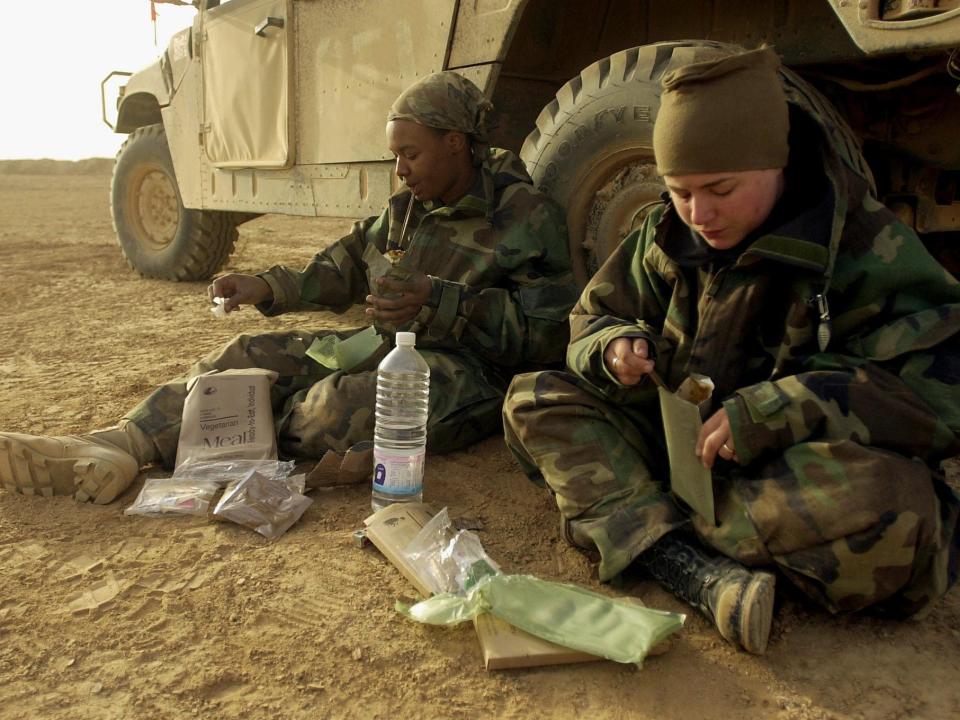
After the Gulf War in 1991, the military realized bad-tasting and monotonous MREs could hurt morale. Gen. Colin Powell, then the chairman of the Joint Chiefs of Staff, told the head of the Combat Feeding Directorate: "Fix it." So that's what they tried to do.
Now, US soldiers are fed a variety of MREs — they get more than 24 meal choices. The meal kits usually cover either a full meal or a day's worth of eating, and they come with utensils, a flameless heating tool, and drinks.
Their options include chili beans, chicken noodles, or spaghetti bolognese. They get crackers, cheese, powdered fruit drinks, and almond poppy seed pound cake. Soldiers can even celebrate birthdays with special MRE birthday cakes.
Despite the wide range of options, US troops consistently requested one more kind of meal for years — pizza. Scientists spent two decades working on a pepperoni pizza with a three-year shelf life. It was added to the MRE menu in 2018.
Across the border in Canada, soldiers are fed MREs with options including salmon or couscous for vegetarians.
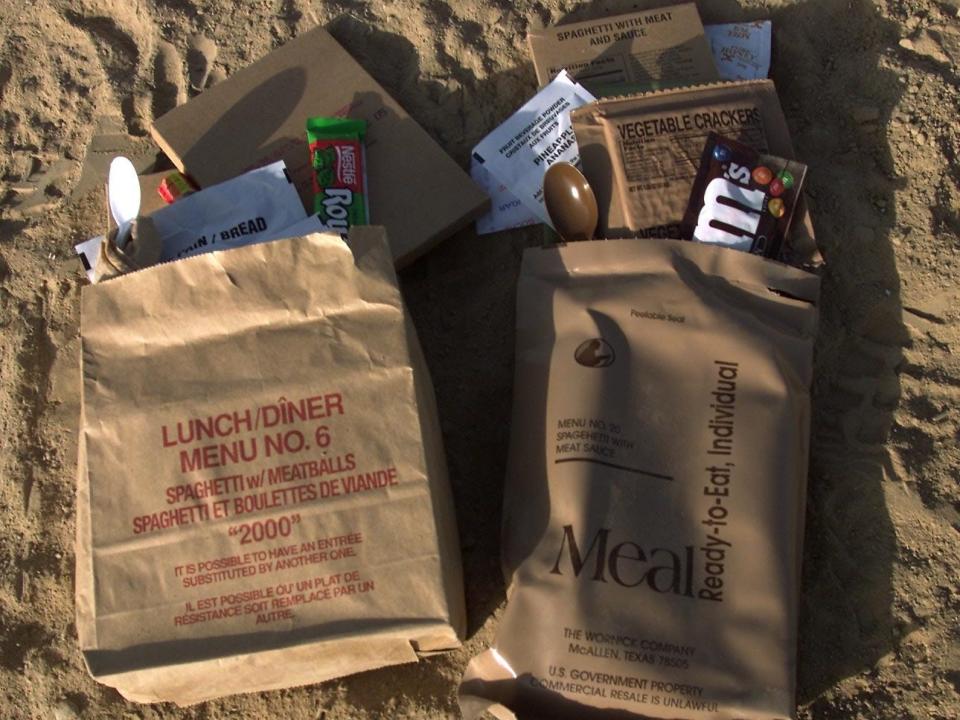
They also get peanut butter and jam for a breakfast sandwich.
Surprisingly, Canadian soldiers don't get any maple syrup in their meal kits.
In Britain, soldiers are fed a national favorite — chicken tikka masala. They are also provided with vegetarian pasta, pork and beans, or a clam chowder option.
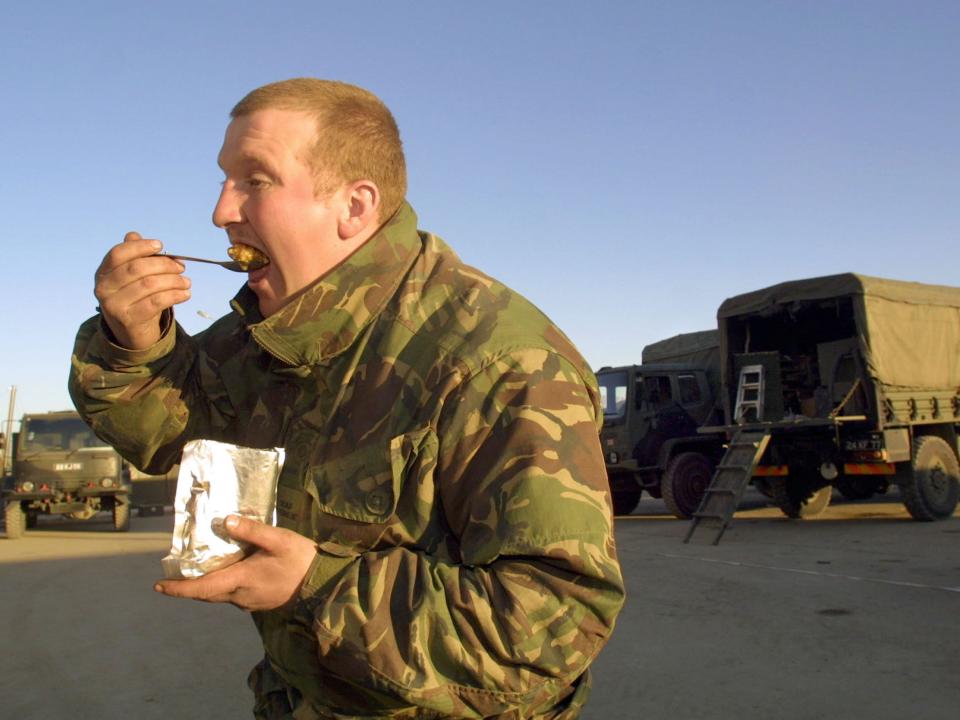
There are mints for after the meal and Typhoo tea or Kenco coffee to wash it down.
During the Iraq War, British military leaders courted controversy by replacing chocolate bars with peanut butter sachets since the chocolate had been melting in the desert heat.
In South Korea, soldiers are fed chicken and rice, beans and rice, pork sausages, meatballs, dried spicy vegetable broth powder, and kimchi.
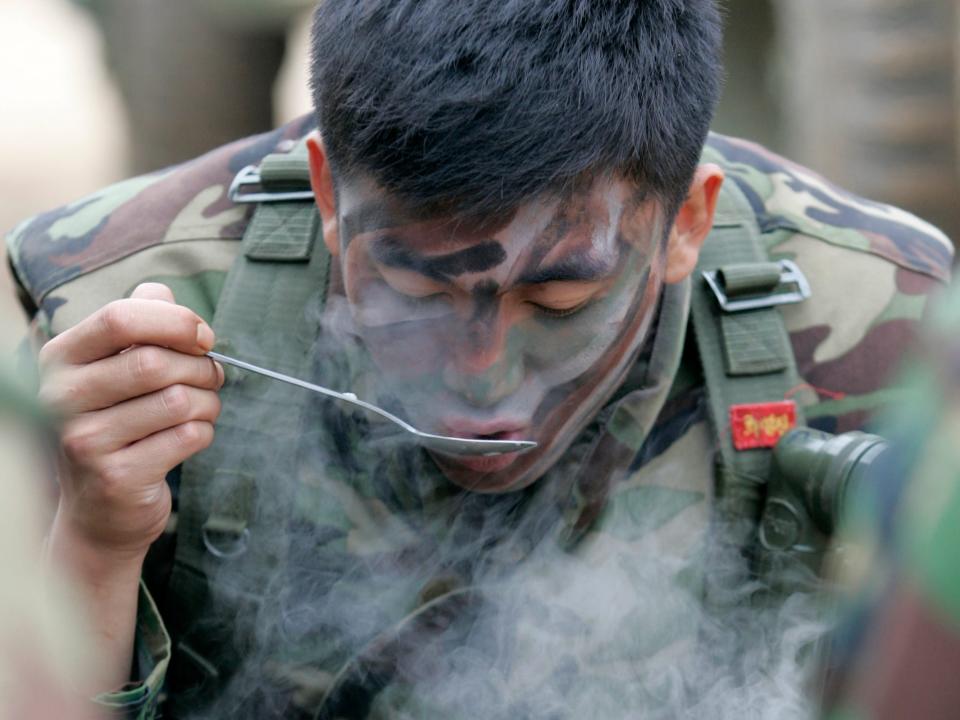
The vegetable broth requires hot water. Korea's MRE heater is different from most military MRE heaters because it doesn't need water to heat up. They also get bibimbap, a traditional rice and meat dish.
In 2020, South Korea's military announced soldiers would soon be able to eat vegan meals. The new menu would include tofu, vegetables, salads, and a vegetarian bibimbap, local newspaper Dong-a Ilbo reported.
In China, soldiers are fed pork egg rolls, vegetables, and pickled mustard root.
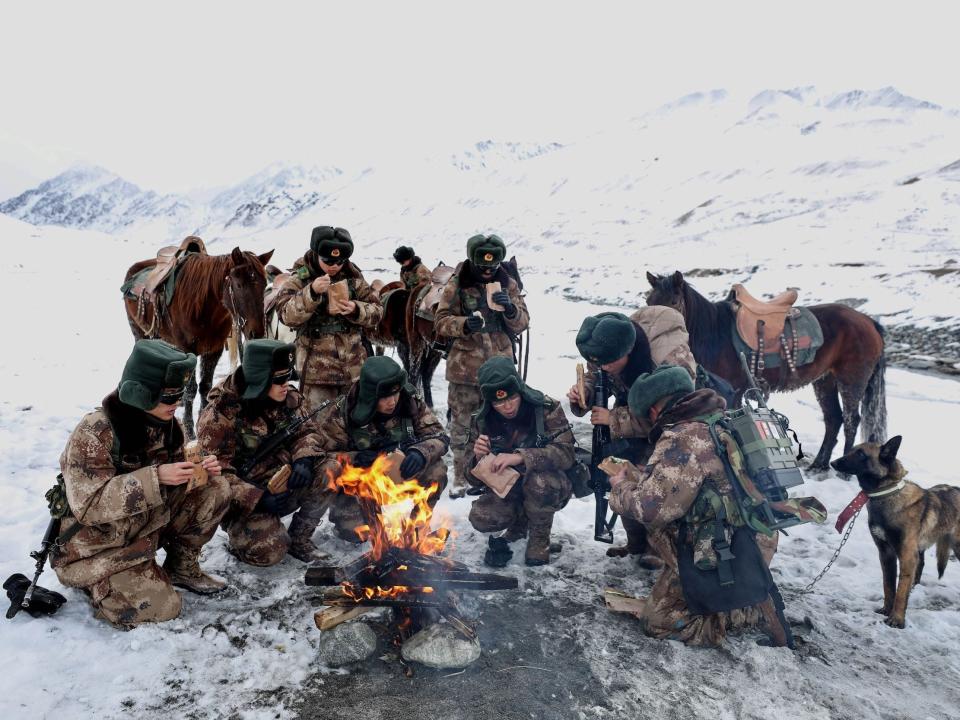
In Japan, soldiers are fed curries, frankfurters, and hamburgers. They also get dried tuna and daikon, which is pickled radish.
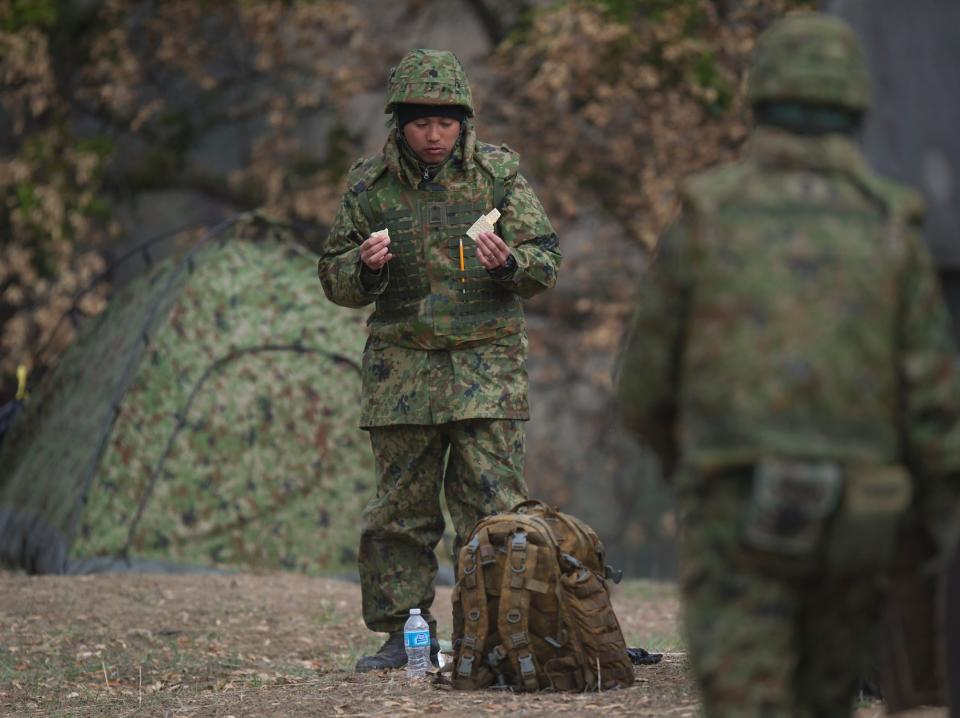
In 2003, it was reported that Japanese soldiers had to bring their own condiments and chopsticks.
In France, soldiers are fed stews, risottos, soups, duck confit, and deer pâté.
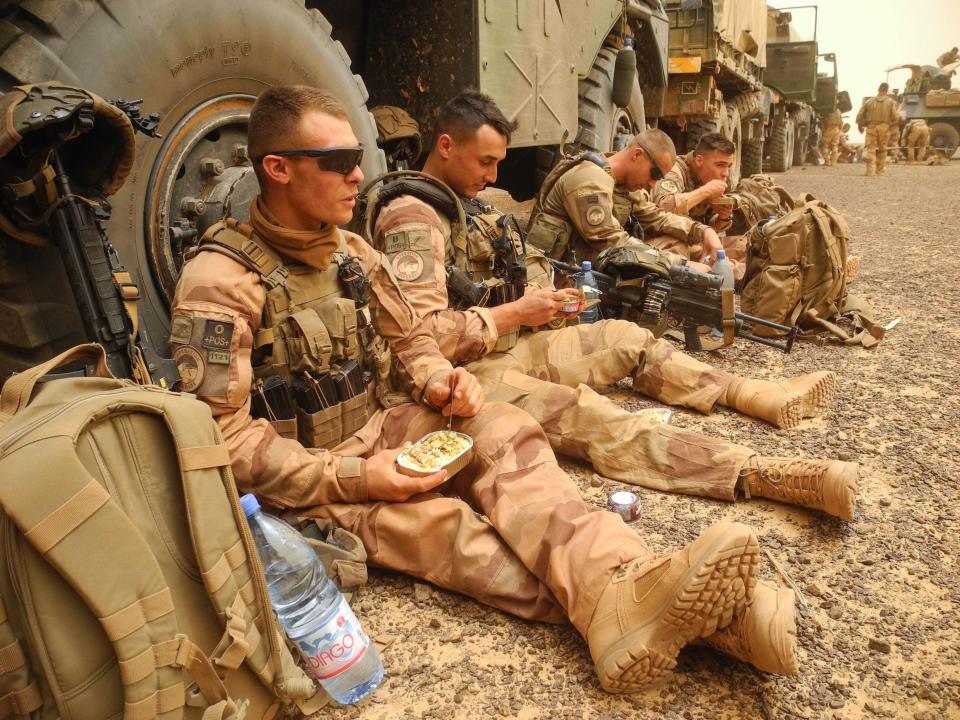
They get muesli bars, three types of biscuits, crackers, and blue cheese. For dessert, they get chocolate pudding. At one point, they also were given a carton of red wine.
In Italy, soldiers are fed a 40% alcohol shot of Grappa for breakfast, as well as powdered cappuccino.

For solid food, they get pasta, bean soup, rice salad, tinned meat, and biscotti.
In Spain, soldiers are fed green beans and ham, tinned tuna salad, as well as squid in vegetable oil.
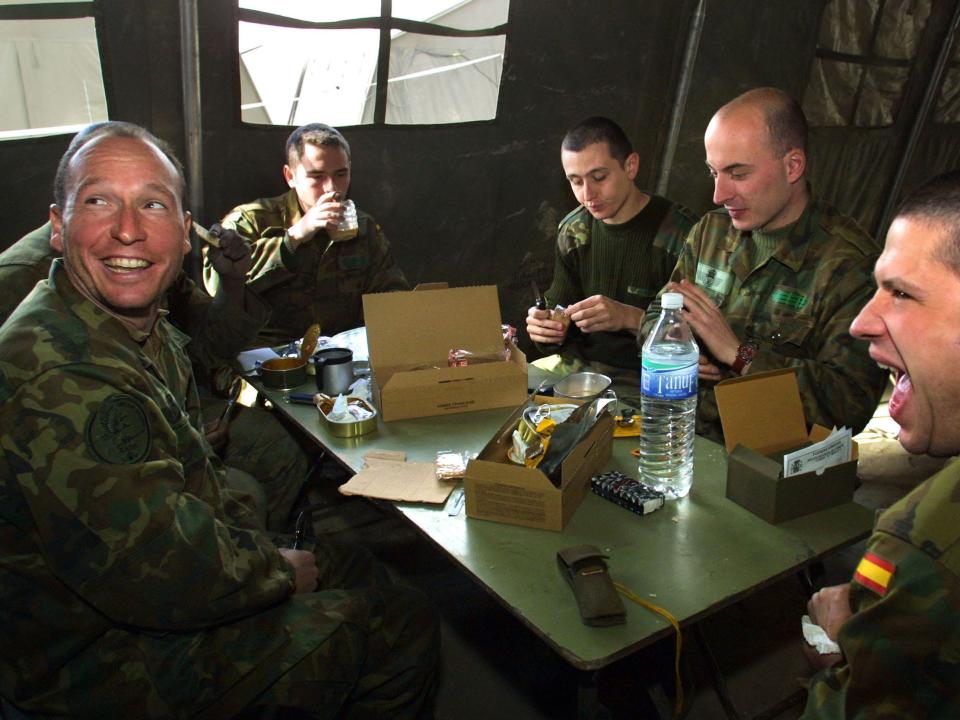
They get crackers instead of bread and for dessert, they're given peaches in syrup. Soldiers are also given hydration tabs and a selection of vitamins.
In Germany, soldiers are fed goulash and potatoes, sausage liver spread, rye bread, and biscotti.
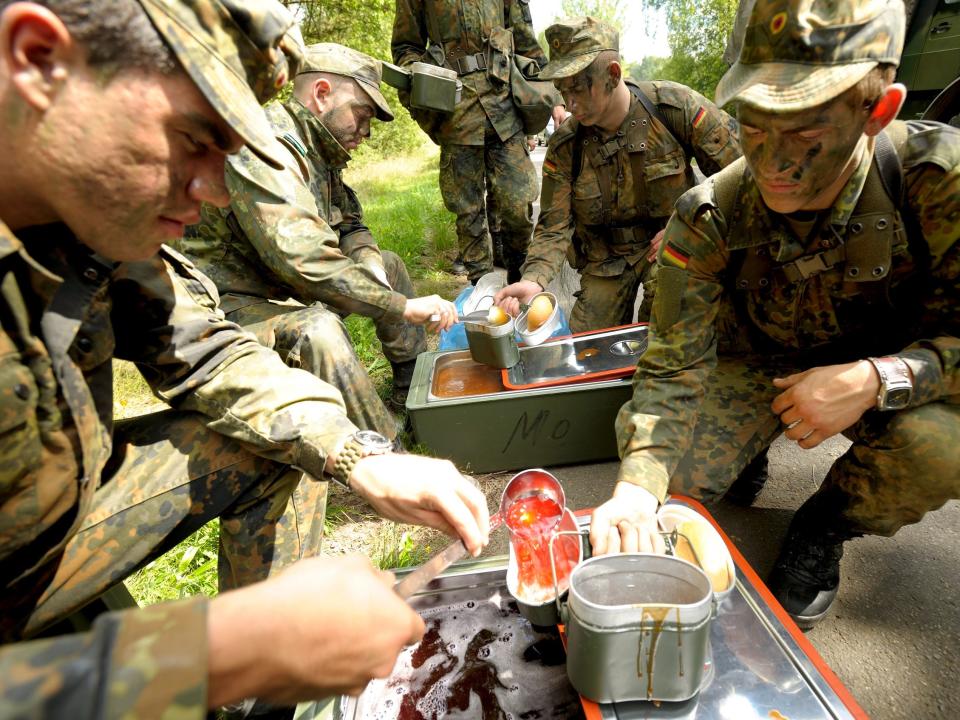
For drinks, they're provided with sachets of juice powder.
In Russia, soldiers are fed biscuits, bacon, buckwheat porridge with beef, or beef goulash. They get tea, coffee, bitter chocolate, and chewing gum.
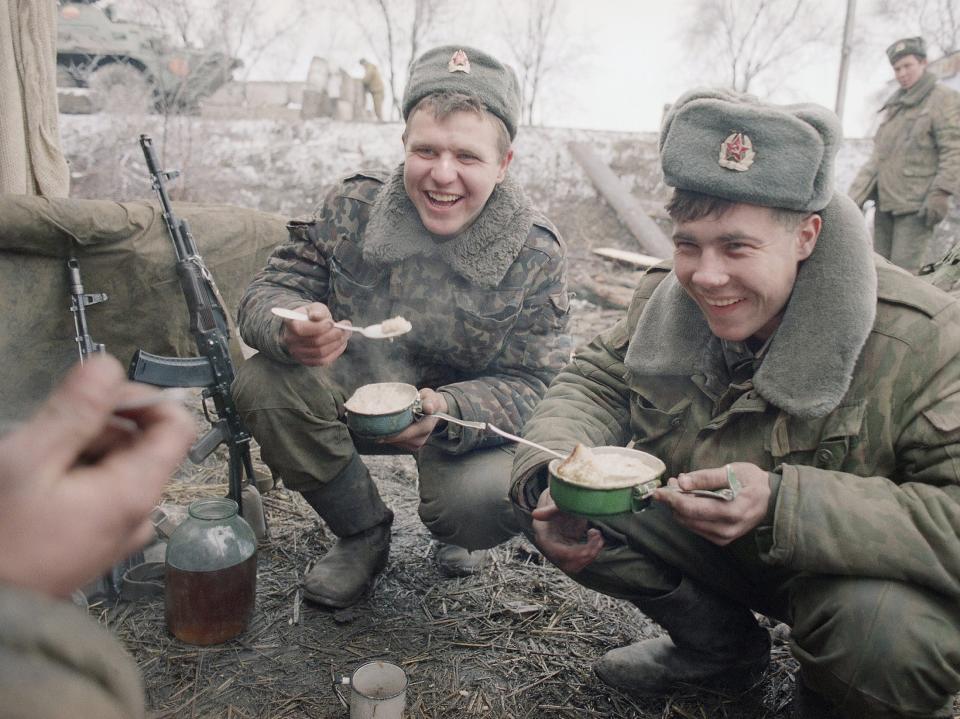
For Russians, the problem is less about taste and more about availability. Last year, Russia had to ask China for MREs to feed its troops during its war on Ukraine, CNN reported.
Zhenya Mykhailenko, a chef from Ukraine, told the Financial Times Russia had the worst MREs.
"Not even dogs eat them," he said.
He also said French MREs were the best and had a superior heating system, while the British had a poor vegetarian option for their soldiers.
In Norway, soldiers are fed a variety of stews — beef, chicken, or cod — as well as rice, fish curries, and protein bars.

They also get Rowntrees Tooty Fruities, a type of sweet.
Since some Norwegian troops are stationed in freezing mountain regions, hot stews are a must.
One Norwegian soldier noted someone chipped their tooth from eating one of the protein bars because it was so hard.
In Australia, soldiers are fed sandwiches with jam or Vegemite, chili, and tuna pasta, along with cheese, chocolate bars, soft drinks, condensed milk, and sweets.
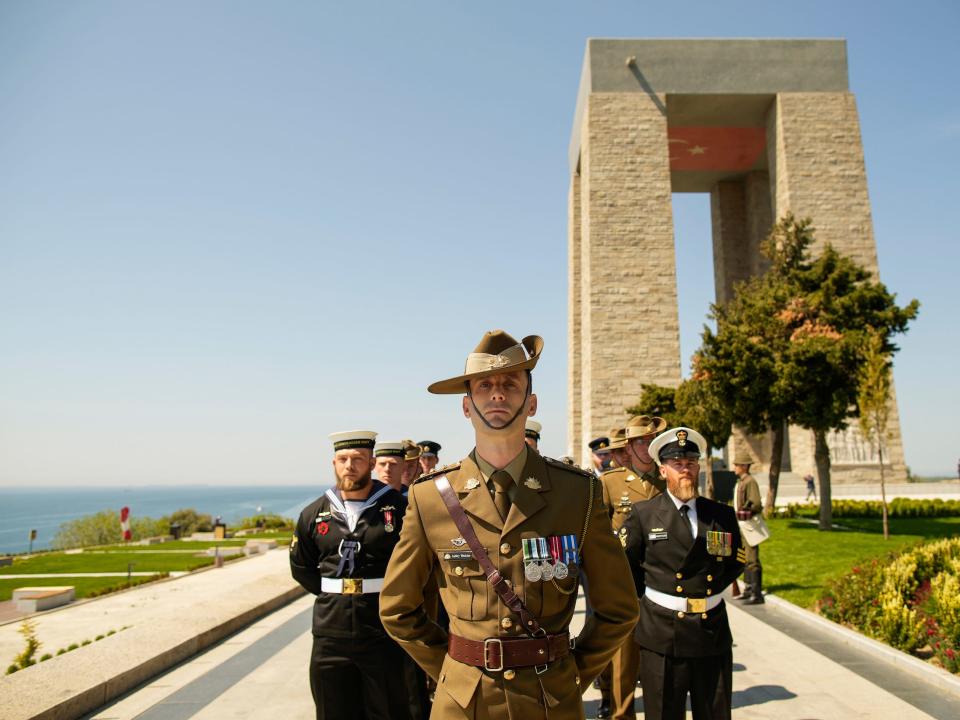
The Australian army's meal rations came with more sweets compared to others.
In New Zealand, it wasn't the MREs soldiers were complaining about, but the meals served in dining facilities.
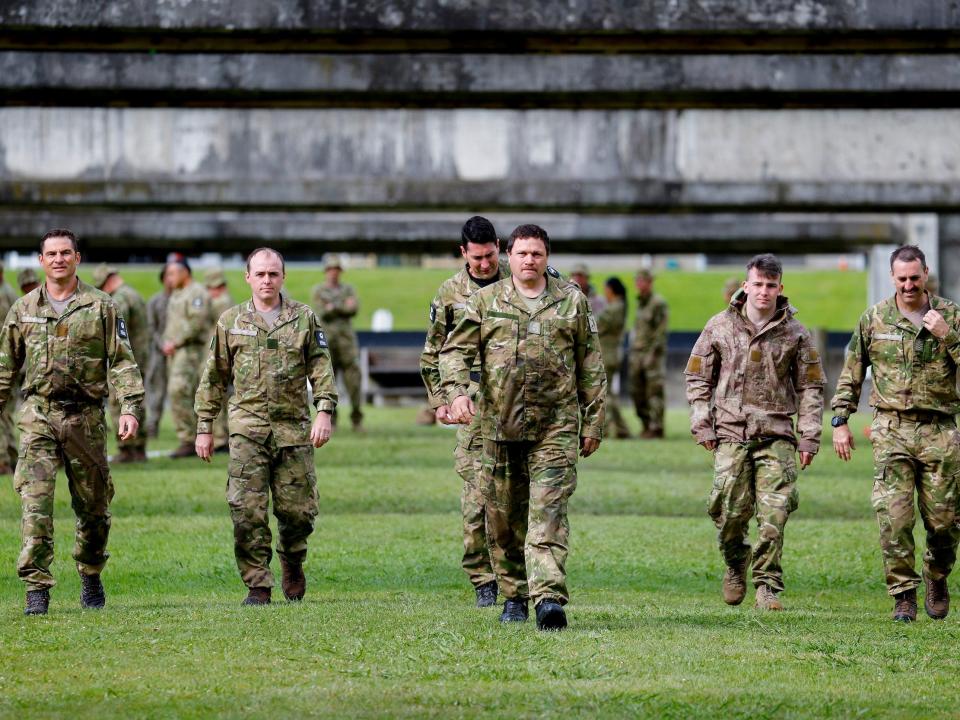
The meals included stew and a watery vegetable soup. A soldier said prisoners probably got served better dinners than they did.
One army camp facility's food was so "disgusting" that the soldiers posted about it on Facebook. It got to the point where the soldiers bought a gas cooker and made their own meals.
Read the original article on Business Insider

